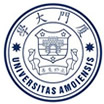2012高考英语模拟试题1(阅读理解)
阅读理解(阅读理解(40分)) 26、
A.
Each Indian tribe had a different language. Many Indians never learned any language except their own. Do you know how Indians from different tribes talked to each other? They had two ways to talk without sound. One way was by sign language; the other way by signals.
Sign language is a way of talking by using signs. Indians used sign language when they met strangers. In this way, they could find out whether the stranger was a friend or an enemy. In the Indian sign language, signs were made with the hands. One sign meant “man”. Another meant “horse”. To tell the time of day when something happened, an Indian pointed to the sky. He showed where the sun had been at the time.
Indians usually used signals when they wanted to send messages to someone far away. To make signals, an Indian might use a pony. He might use a blanket. Or he might use smoke, a mirror or fire arrows.
To signal that he had seen many animals, an Indian rode his pony in a large circle. Sometimes the Indian gave a signal like this and then went away to hide. This meant that there was danger.
The blanket signal was visible from far away. An Indian held the corners of a blanket in his hands. Then he began to swing the blanket from side to side in front of him. An Indian could send many different signals with his blanket.
He could also send many signals with a mirror. He usually used the mirror to warn someone of danger. Or he attempted to get the attention of a person far away. But he also used it to send messages in code. Of course, mirrors could be used only when the sun was shining. At night, Indians used fire arrows for signaling.
An Indian also sent signals with smoke. He made a small fire of dry wood. Then he put grass or green branches on it. He held a blanket over the fire for a minute. When he removed the blanket from the fire, there was a cloud of smoke. The number of clouds of smoke told his message in code.
Now you can see that Indians didn’t need to learn each other’s language. They could talk to one another by using signals or sign language.
1. The whole text is mainly about _______.
A. different tribes have different languages
B. the Indians had many kinds of languages
C. how Indians communicated between different tribes
D. why the Indians used many languages
2. An Indian used a mirror to do all the followings EXCEPT _______.
A. send messages in code
B. get the attention of someone in the distance
C. warn someone of danger
D. to tell a friend from an enemy
3. Sign language is _______.
A. to write one’s signature
B. a secret way of talking to some Indian tribes
C. a kind of gesture only for Indians
D. a way to express one’s ideas by making gestures
4. Indians didn’t need to learn each other’s language because _______.
A. they thought they could easily make themselves understood
B. they could use signals or sign language
C. different tribes lived far away and never met each other
D. they never communicated with one another
B
People all over the world today are beginning to hear and learn more and more about the problem of pollution. Pollution is caused either by man's release of completely new and often artificial substances into the environment, or by releasing greatly increased amounts of a natural substance , such as oil tankers into the sea.
The whole industrial process which makes many of the goods and machines we need and use in our daily lives, is bound to create a number of waste products which upset the environmental balance, or the ecological balance as it is also known. Many of these waste products can be prevented or disposed of sensibly, but clearly while more and more new and complex goods are produce there will be new, dangerous wastes to be disposed of, for example, the waste products from nuclear power stations. Many people, therefore, see pollution as only part of a larger and more complex problem, that is, the whole process of industrial production and consumption of goods. Others again see the problem mainly in connection with agriculture, where new methods are helping farmers grow more and more on their land to feed our ever-increasing populations. However, the land itself is gradually becoming worn out as it is being used in some cases, too heavily, and artificial fertilizer cannot restore the balance.
Whatever its underlying reasons, there is no doubt that much of the pollution caused could be controlled if only companies, individuals and governments would make more efforts. In the home there is an obvious need to control litter and waste. Food comes wrapped up three or four times in packages that all have to be disposed of; drinks are increasingly sold in bottles or tins which cannot be reused. This not only causes a litter problem, but also is a great waste of resources, in term of glass, metals and paper. Advertising has helped this process by persuading many of us not only to buy things we neither want nor need, but also to throw away much of what we do buy. Pollution and waste combine to be a problem everyone can help to solve by cutting out unnecessary buying ,excess consumption and careless disposal of the products we use in our daily lives.
5. The underlined phrase “disposed of ”in the second paragraph means_______.
A. dealt with B. exposed
C. disapproved of D. collected
6. In the writer’s view ,the more new goods, _______.
A. the less pollution
B. the harder pollution can be prevented
C. the more pollution there will be
D. the more easily pollution can be controlled
7. What can we learn from the last paragraph?
A. We can do much to reduce pollution.
B. The government is trying hard to stop pollution.
C. Individuals know how to get rid of the habit of littering everywhere.
D. We can’t stop buying unnecessary things.
8. People can help solve the problem of pollution by _______.
A. urging their governments to control litter and waste
B. making anti-pollution advertisements
C. cutting down the use of oil and other oil products
D. reducing unnecessary buying, over-consumption and careless disposal of wastes
1---5 CDDBA 6---10 CAD AA
微信关注公众号:【福建高考指南丨猎学网】
或扫描下方二维码
回复【试题】获取全部试卷答案
全部评论
本文转载至互联网,不代表福建高考网立场,如有侵权,请联系官方删除
注:通过加密传输不会对外展示联系方式
-
福建省2022年10月高等教育自学考试成绩公布预告 受疫情影响,2022年10月高等教育自学考试理论考试及下半年实践考核成绩预计于12月10日左右公布,具体查询时间请关注福建省教育考试院官网。 成绩公布后,我院将安排2022年下半年自学考试毕业申请工作,请广大考生做好相应准备。 福建省教育考试院 2022年11月14日 2022-11-14
-
2023年福建省普通高校招生体育类专业省级统一考试考生须知 2023年福建省普通高校招生体育类专业省级统一考试将于2022年11月21日-11月28日在福建师范大学旗山校区举行。为确保考生顺利参加考试,现将有关事项告知如下: 一、鉴于当前新冠肺炎疫情的不确定性,考试防疫要求将按疫情变化适时调整,请密切关注福建省教育考试院和福建师范大学考点的官网及微信公众号发布的考试防疫要求,遵守考试防疫规定。同时,请考生积极配合学校或当地教育招生考试机构做好考前健康情况摸排工作,如实填报目前居住地、身体健康情况等信息。 2022-11-10
-
关于部分考生申请2022年下半年全国高等教育自学考试退费的通告 2022年下半年全国高等教育自学考试已于10月22日—25日举行。鉴于当时有部分考生受疫情影响或因参加疫情防控工作无法参加考试,经研究,决定启动部分考生考试退费工作。现将有关事项通告如下: 一、申请退费对象 (一)因受疫情影响,本次自考所报课程未如期参加考试的考生。 (二)因参加疫情防控工作无法参加考试的一线人员。 2022-11-08
-
福州考区2022年成人高考有关事项公告(三) 福州考区考生: 根据福州疫情防控形势,现对本次考试有关事项公告如下: 1.请尚未重新打印准考证的考生,即时凭账号、密码登录福建省教育考试院网站自行打印准考证,以免影响正常考试。 2022-11-04
-
华南农业大学珠江学院专业介绍——集成电路设计与集成系统 华南农业大学珠江学院专业介绍——集成电路设计与集成系统 2023-05-06
-
广东药科大学专业介绍——数字媒体技术 本专业培养适应数字媒体产业发展需求,德智体美劳全面发展,系统掌握数字媒体技术专业的基本理论和基础知识,熟悉游戏开发、虚拟现实技术和影视动画处理等方面的应用开发技术,具备在数字媒体技术在各行业和领域从事技术开发、作品设计与制作、传播和管理等工作的能力,有较强技术应用和实践能力的应用型人才。 2023-09-21
-
辽宁大学专业介绍-马克思主义理论 马克思主义理论是对马克思主义进行整体性研究的一级学科,主要研究马克思列宁主义、马克思中国化的重要理论成果、毛泽东思想、邓小平理论等,培养能在党政机关、外事部门、高等院校从事实际工作的高级专门人才。例如:在相关科研机构进行研究工作,利用马克思主义立场、观点和方法分析研究当代现实问题。 2023-09-21
-
绥化学院化学工程与工艺专业介绍 本专业隶属食品与制药工程学院,专业代码081301,学制四年,授予工学学士学位。 2025-01-09
-
高考生260分可以上什么大学? 毫无疑问,高考是以分数论成败的,分数高者优先拥有选择院校的权利,对于寒窗苦读几十年的学生来说,高考考280多分肯定是心有不甘,很多学生都想在高考结束后,选择一所自己满意的学校,那么高考生260分可以上什么大学? 2023-10-10
-
高考落榜没考上大学还可以上什么学校? 高考未考上理想大学可以选择职业技术学院、民办大学、成人教育学院或专升本等途径继续深造。职业技术学院注重实践能力培养,毕业生就业率高;专升本通过考试进入本科阶段,完成学士学位。选择适合自己的教育途径和规划未来发展方向,能更好地实现个人目标和职业发展。今天我们就来具体聊一下高考落榜没考上大学还可以上什么学校? 2024-11-12
-
高考大专都没有录取还有学校上吗? 高考失利没有被任何大专学校录取,为此忧心忡忡对未来充满迷茫。很多同学和家长私信我如果大专没有录取上,这种情况该怎么办?可以去上技校吗?今天我们就来一起了解一下吧。 2024-12-13
-
福建的历史类专科学校排名前5的情况怎么样? 高考选科选的是历史类的考生,想要报考比计较哦啊好的历史类还在你可院校,就必须知道它们的排名,按排名顺序进行了解。下面是小编收集整理的福建的历史类专科学校排名前5的学校名单,一起来看看吧,希望对你有所帮助。 2023-06-09
-
2024福建高考英语真题(新高考I卷) 2024年福建高考将于6月7日至9日举行,福建高考英语采用的是全国新高考I卷。福建高考平台将在考后第一时间公布考试真题与答案,请持续关注!最后福建高考平台在此祝大家取得好成绩! 2024-06-08
-
2024福建高考历史真题 2024年福建高考历史已于6月8日结束,福建高考历史采用的是福建卷,考试真题与答案已经公布,考生可以通过查阅真题和答案,了解自己的考试情况,为接下来的备考和志愿填报做好准备。更多高考资讯、高校最新政策、历年高考录取分数线、志愿填报等信息,请关注福建高考网。 2024-06-08
-
2024福建高考物理真题 2024年福建高考物理已于6月8日结束,福建高考物理采用的是福建卷,考试真题与答案已经公布,考生可以通过查阅真题和答案,了解自己的考试情况,为接下来的备考和志愿填报做好准备。更多高考资讯、高校最新政策、历年高考录取分数线、志愿填报等信息,请关注福建高考网。 2024-06-08
-
2024福建高考化学真题 2024年福建高考化学已经顺利结束,福建高考化学采用的是福建卷,考试真题与答案已经公布,考生可以通过查阅真题和答案,了解自己的考试情况,为接下来的备考和志愿填报做好准备。更多高考资讯、高校最新政策、历年高考录取分数线、志愿填报等信息,请关注福建高考网。 2024-06-14
-
文史、理工类降分录取政策 本科批按照本科批录取控制分数线招生的专业,原则上不降分录取。其中,安排在本科提前批录取的航海类、公安类、司法类院校(专业),征求志愿录取后生源仍不足的,经批准,可在本科批录取控制分数线下20分以内(含20分, 2020-07-24
-
2020年福建省普通高等学校招生录取实施办法 各市、县(区)高等学校招生委员会、教育局,平潭综合实验区社会事业局,各普通高等学校:根据《教育部关于做好2020年普通高校招生工作的通知》(教学〔2019〕4号)和《教育部高校学生司关于做好2020年普通高等学校特殊类型 2020-07-23
-
福建商学院2019年高考录取规则 【对普通文理专业的录取规则】(一)对文理科类实行按专业志愿出档方式出档的省份,按照“分数优先”的原则录取,即按文化总分排序,从高到低录取。(二)对文理科类实行按院校志愿出档方式出档的省份,第一专 2019-06-05
-
宁德师范学院2019年高考录取规则 【专业录取要求】(一)外语语种要求:英语、商务英语专业只招收英语语种考生,其它专业不限考生的外语语种。非外语专业学生进校后只以英语作为公共基础外语安排教学。(二)外语成绩要求:报考英语、商务英语专业考生须 2019-06-05
-
莆田学院2023年高职招考、专升本录取情况 莆田学院2023年高职招考、专升本录取情况 2023-10-08
-
绵阳城市学院2024年福建省普通类本科批录取结束 我校已完成福建省普通类本科批招生录取工作绵阳城市学院2024年在福建省普通类本科批投档分数线已出请填报我校的考生及时关注 2024-07-30
-
西华大学2024年高考录取时间表汇总 西华大学2024年高考录取时间表汇总 2024-08-07
-
西南石油大学2024年普通本科招生录取信息 西南石油大学2024年普通本科招生录取信息 2024-08-14
-
浙江国际海运职业技术学院2022届毕业生就业质量报告 浙江国际海运职业技术学院2022届毕业生就业质量报告 2023-07-17
-
绍兴文理学院元培学院翻译专业人才培养成果 近三年翻译专业毕业生平均就业率97%以上,同时多名学生成功考取广东外语外贸大学、浙江师范大学、宁波大学、浙江工商大学等高校研究生,并继续攻读博士学位。 2023-07-30
-
绍兴文理学院元培学院土木工程专业人才培养成果 土木工程专业在专业教学质量保障体系不断完善、加强的背景下,人才培养方面成果显著。 2023-07-30
-
绍兴文理学院元培学院护理学专业人才培养成果 (一)近三年专业就业及深造情况:就业率均在95%左右,考研率逐年上升。 2023-07-30
-
官方企业微信
-
官方微信公众号
-
志愿填报小程序





